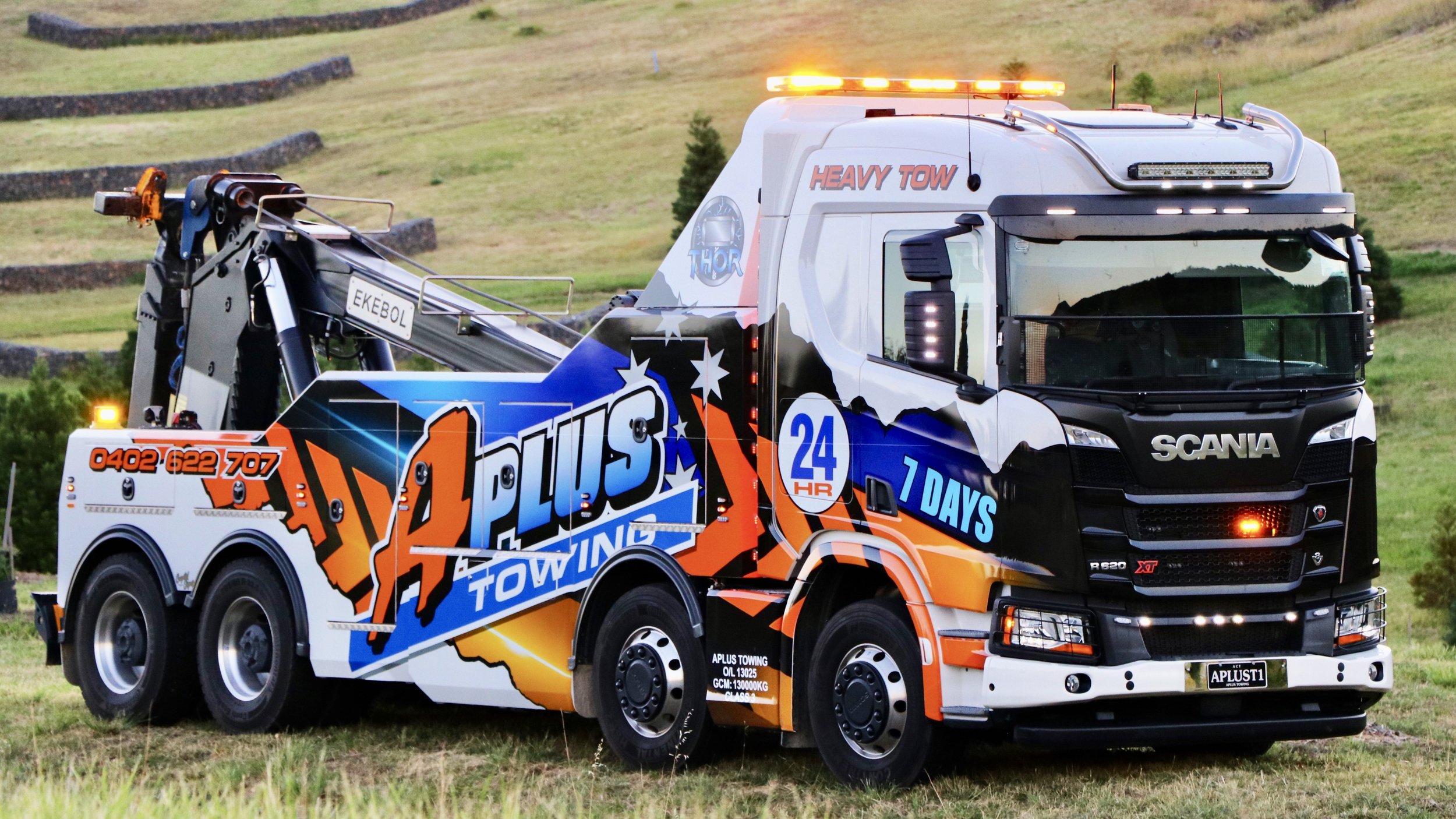eTrucks Axle Weight Limit Increase Undergoing Trials.
Three-state zero-emission trucks axle weight limit increase trials are welcomed by Daimler Truck.
(Read about the launch of the eActros in Europe below this article)
Daimler Truck Australia Pacific has welcomed the announcement of trials by New South Wales, South Australian and Queensland governments that allow greater truck front axle weights for electric trucks.
As a rule, electric drive technology weighs more than a traditional internal combustion engine which means more weight and higher front axle load.
Australian states have long enforced front axle weight tolerances that are significantly lower than many regions, including Europe. This can exclude some vehicles from local sale or cut their productivity by reducing the amount some models can carry without breaching overall weight limits.
Daimler says this could limit the take-up of electric trucks that produce zero emissions and operate near silently in our market, and welcomed the increased limit trials in the three states. It noted that European authorities have approved a similar increase in front axle weight allowances for EV trucks over internal combustion variants.
“The increased EV front axle weight trials in New South Wales, South Australia and Queensland are fantastic initiatives that acknowledge electric vehicle take-up would be restricted by the current regulations,” says Daimler Truck Australia Pacific President and CEO, Daniel Whitehead. “Electric trucks deliver massive benefits to the community and operators alike, so we are excited that these state governments appear to be prepared to conduct trials such as these to try and ensure Australians are not left behind the rest of the world when it comes to this great technology.”
2nd Gen eCanter is also undergoing evaluation here in Oz
Mercedes-Benz Trucks is currently undertaking a local evaluation program for the battery-electric eActros and eEconic rigid trucks in Australia, while sister company Fuso is preparing to launch its new generation eCanter electric truck. Mercedes-Benz Trucks has just revealed the eActros 600 in Germany, a pioneering electric prime mover that introduces a raft of new technology, has a range of 500km and demonstrates the rapid advancement of electric commercial vehicles.
Mercedes-Benz Trucks is currently studying unique local customer requirements and regulations as it considers the specification of trucks such as the eActros 600, which is an intrastate model rather than a replacement for a linehaul vehicle.
“It’s our view that fuel cell electric technology will deliver for longer linehaul applications with maximum weights, but a battery electric truck like the eActros 600 would be a brilliant for many intrastate applications,” said M-B head, Andrew Assimo. “With public commercial vehicle charging in its infancy in Australia, we see most battery electric trucks charging at a depot rather than public charging locations in between destinations.”
. . . . . . . .
eActros Prime Mover Unveiled in Europe
Mercedes-Benz Trucks has unveiled the series version of the first battery-electric long-haul truck with the three-pointed star. The manufacturer presented the Mercedes-Benz eActros 600 as a world premiere to an international audience at an event south of Hamburg. With this heavy-duty electric truck, the manufacturer plans to define the new standard in road freight transport – in terms of technology, sustainability, design and profitability for e-fleet operators.
The high battery capacity of more than 600 kilowatt hours – hence the model designation 600 – and a new, particularly efficient electric drive axle developed in-house, enable the e-truck to achieve a range of 500 kilometers1 without intermediate charging. Therefore, the eActros 600 will be able to travel significantly more than 1,000 kilometers per day.
This is made possible by intermediate charging during the legally prescribed driver breaks – even without megawatt-charging. Around 60 percent of long-distance journeys of Mercedes-Benz Trucks customers in Europe are shorter than 500 kilometers anyway, which means charging infrastructure at the depot and at the loading and unloading points is sufficient in such cases. For all other uses, continual expansion of public charging infrastructure is vital in order to make the electric truck viable for long-distance haulage across Europe.
The vehicle is technically designed for a gross combination weight of up to 44 tons. With a standard semitrailer, the eActros 600 has a payload of around 22 tons in the EU. In some cases, national law may permit a higher payload.
Visually, the e-truck is characterized by a fundamentally new, puristic design with clear lines and an aerodynamic shape. When it comes to profitability for fleet operators, the electric truck is intended to set new standards, over the long term replacing the majority of diesel trucks in the important long-haul transport segment.
The core of Mercedes-Benz Trucks‘ concept for battery-electric long-distance transport is to offer customers a holistic solution consisting of vehicle technology, consulting, charging infrastructure and services.
Electricity price and toll system decisive for profitability compared to diesel trucks
The time period within which fleet operators can achieve cost parity with a comparable diesel truck using the eActros 600 in long-distance haulage differs from country to country, in particular depending on the electricity and diesel price and toll system.
In the large transit countries of France and Germany, for example, a low electricity price and the planned CO2-based truck toll, respectively, have a positive effect on the operational costs of battery-electric trucks. This means that the eActros 600 can be more profitable than a diesel long-haul truck within the average vehicle holding period of around five years or after around 600,000 kilometers – despite a purchase price that is around two to two and a half times higher than the diesel equivalent. Government subsidization of e-trucks and charging infrastructure is a key lever providing support in ramping up the market.
The eActros 600 has three battery packs, each with 207 kWh5. These offer an installed total capacity of 621 kWh. The batteries are based on lithium iron phosphate cell technology (LFP) and are characterized by a long service life.
The development engineers at Mercedes-Benz Trucks have designed the eActros 600 to meet the same requirements on the durability of the vehicle and components as a comparable conventional heavy-duty long-haul Actros. That means up to 1.2 million kilometers in ten years of operation. After this period of use, the battery state of health should still be over 80 percent. Moreover, in contrast to other battery cell technologies, approximately 95 percent of the installed capacity can be used with LFP technology. This makes a higher range with the same installed battery capacity possible.
Innovative drive technology – Predictive Powertrain Control in the eActros 600
Mercedes-Benz Trucks has developed a new 800-volt electric axle with two electric motors and a four-speed transmission specifically for use in heavy-duty long-haul transport. The electric motors generate a continuous output of 400 kW as well as a peak output of 600 kW and ensure powerful acceleration, high driving comfort and high driving dynamics. The full motor output is available most of the time with almost no interruption in torque.
More Blog Posts You Will Love
More From the News
Got something to say? Say it here!
truckinwithkermie.com is for YOU and about YOU. We’d love to hear your stories. There are a number of ways to get in touch with us:
kermie@truckinwithkermie.com
(+61) 0418 139 415















